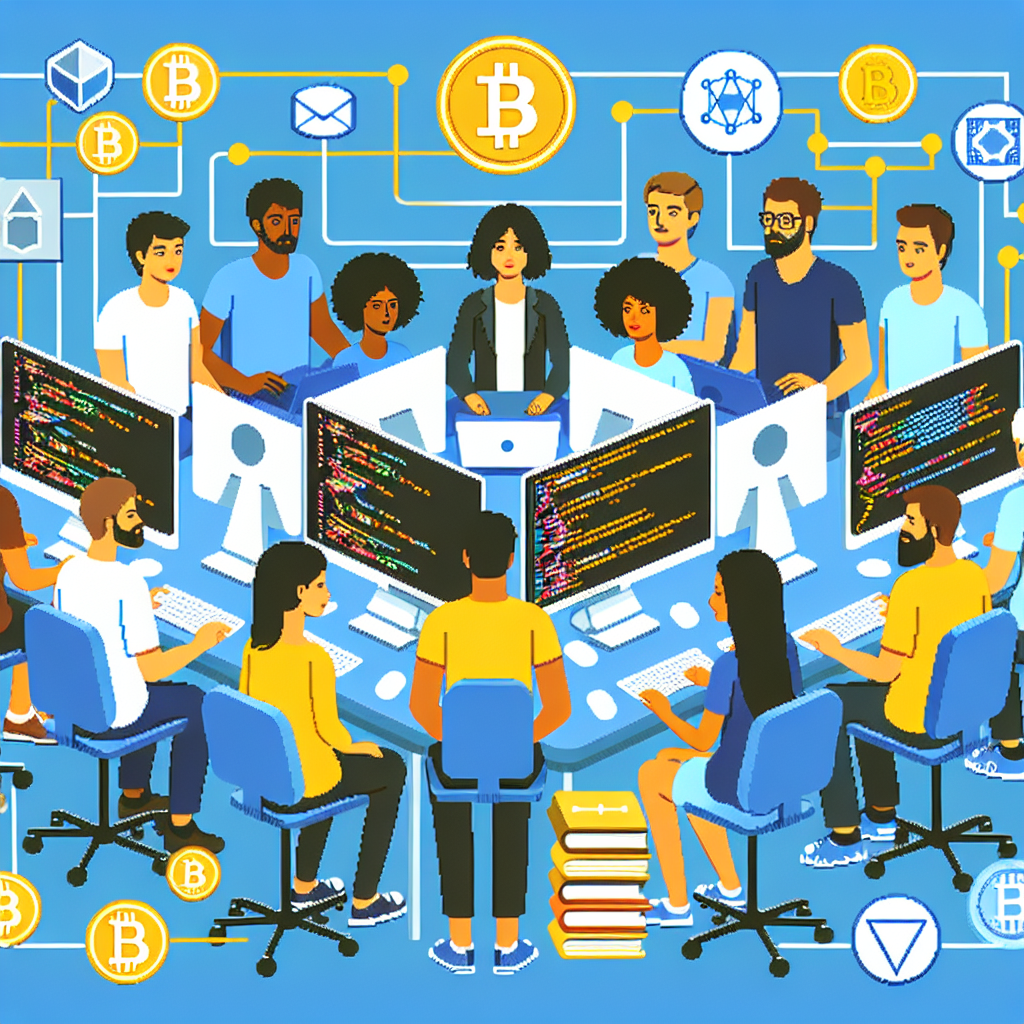
In todays digital world, the programming language Web 3.0 is transforming how we interact online. Imagine a place where your data is secure, privacy is respected, and you have control over your online presence. This is precisely what Web 3.0 promises, and it’s being powered by innovative programming languages. ⭐
Web 3.0 marks a significant shift from the traditional internet structure. Instead of being dominated by centralized platforms, its all about decentralization. For example, with the rise of blockchain technologies like Ethereum, developers use languages such as Solidity to create smart contracts that facilitate peer-to-peer interactions without middlemen. This type of interaction allows businesses to save costs and operate more efficiently.
Did you know that by 2025, it’s projected that over 25 billion devices will connect to the internet, emphasizing the need for robust programming languages Web 3.0? Additionally, blockchain technology is expected to boost global GDP by up to $1.76 trillion by 2030. These numbers reflect not just trends but the growing necessity for innovative solutions and languages that support this evolution.
| Year | Projected Number of Internet Connections | Estimated Contribution of Blockchain to GDP |
| 2023 | 15 billion | USD 800 billion |
| 2025 | 25 billion | USD 1 trillion |
| 2028 | 30 billion | USD 1.5 trillion |
| 2030 | 35 billion | USD 1.76 trillion |
Consider the case of a local startup, "FinTech Innovators," facing high transaction fees while navigating traditional banking systems. After shifting to a blockchain model using a programming language Web 3.0 for their application, they saw transaction costs drop by 70%! Their success story illustrates the practical benefits of adopting technology that embraces decentralization.
Another client, a retail business called "EcoGoods," struggled with product authenticity. By employing smart contracts, they ensured that consumers could verify the origins of their products, enhancing their trust and ultimately boosting sales by 30%. Such examples underscore how embracing new programming languages can lead to substantial business growth. ⭐
As experts in IT solutions, our dedicated team recommends regularly evaluating your technology stack. For instance, incorporate programming languages that support Web 3.0 functionalities. Regular updates are crucial in this rapidly evolving landscape. Consider this:
The future of online interactions is here, and it’s powered by programming language Web 3.0. Businesses that embrace this technology will not only stay competitive but may also lead their industries. Are you ready to take the next step? ⭐
Don’t miss out on the opportunity to transform your business dynamics. Reach out to our dedicated team at webmaster.md. With over 20 years of experience and a wide array of services from software development to technical support, we offer everything you need in one place. Contact us today at +373 601 066 66 or visit our website to learn more. Let’s revolutionize your online interactions together!
Web 3.0 represents the decentralized web where users control their data, enabled by technologies like blockchain.
It allows developers to create decentralized applications and smart contracts that enhance user autonomy and security.
Smart contracts are self-executing contracts with the terms of the agreement directly written into code.
Decentralization reduces reliance on single entities, enhancing security and privacy for users.
Common languages include Solidity, Rust, and JavaScript, which power decentralized applications.
They can lower operational costs, increase trust with transparent transactions, and enhance customer engagement.
Blockchain provides the infrastructure for secure and transparent transactions without intermediaries.
Yes, including issues related to regulatory compliance and the need for robust cybersecurity measures.
Absolutely! Many businesses are successfully integrating Web 3.0 technologies into their existing operations.
Begin by evaluating your current tech stack, then explore potential dApps and smart contracts that fit your business model.

Navigating the dynamic landscape of the digital universe, particularly in the Web 3.0 space, requires a clear understanding of the best practices for selecting a programming language. As a developer or business owner, the choices you make can significantly impact your projects success. Lets explore several strategies to guide your decision-making process. ⭐
Before diving into a programming language, define the specific needs of your project. Ask yourself questions like:
A vibrant community can be invaluable. The availability of libraries, frameworks, and third-party tools boosts productivity. Look for:
Security is a top concern in the Web 3.0 era, especially with increasing cyber threats. Opt for languages offering robust security features such as:
Your projects ability to grow and adapt to new demands is crucial. A scalable programming language can effectively handle increasing amounts of work or its ability to grow without compromising performance. Consider these points:
No matter how great a programming language is, if your team lacks expertise, it becomes an obstacle. Evaluate:
Being aware of industry trends is essential for longevity. Technologies evolve, and programming languages can rise and fall in popularity. Keep these points in mind:
The best way to confirm a programming language is right for your project is to prototype. Develop a small portion of your application using the language and gauge factors such as performance, integration ease, and the overall user experience.
⭐ In summary, while selecting a programming language in the Web 3.0 era may seem daunting, following these best practices can help streamline your decision-making process. By understanding your needs, evaluating community support, prioritizing security, focusing on scalability, considering your team’s expertise, staying updated on trends, and testing your choices, you’ll position your project for success. Are you ready to elevate your development process? Contact us at +373 601 066 66 or visit webmaster.md to explore our full range of IT services tailored for your Web 3.0 journey!

In the evolving realm of Web 3.0, a new series of myths surrounding programming languages can significantly hinder your business’s growth. Misconceptions can result in poor decisions and ultimately lead to wasted resources. Let’s debunk some of these myths and explore how they can negatively impact your organization. ⭐️♂️
A common belief is that if youre developing for Web 3.0, you must use blockchain-specific programming languages like Solidity or Rust. While these languages are fantastic for specific blockchain applications, they aren’t the only option! The truth is:
Some businesses shy away from experimenting with new languages due to perceived high costs associated with retraining staff or hiring new developers. However, heres the reality:
Another misconception is that newer programming languages lack stability and are risky to adopt. However, consider the following points:
Just because a language is widely used doesn’t necessarily mean it’s the best fit for your project. Explore the potential downsides:
Some organizations believe that having all developers use the same programming language will improve efficiency. However, this mindset can limit your projects potential:
Many may feel hesitant to invest time in learning new programming languages, fearing it will slow down productivity. But the reality is often quite the opposite:
Dispelling these myths about programming languages for Web 3.0 is crucial in helping your business thrive. By acknowledging the diverse landscape of programming options and being open to modernization and learning, you can unlock the full potential of Web 3.0 technologies.
⭐ To stay ahead in this competitive market, it’s essential to embrace efficient programming strategies rather than adhering to outdated beliefs. Ready to empower your business with the right tools and knowledge? Reach out to us today at +373 601 066 66 or visit webmaster.md to explore how we can help you navigate the future of technology with confidence!

The evolution of the programming languages in Web 3.0 reflects the dynamic nature of technology and user expectations. As we dive deeper into this digital transformation, its crucial to stay informed about emerging trends that can shape the landscape. Here are some key trends to watch! ⭐
The core principle of Web 3.0 is decentralization, and this shift is driving demand for programming languages that support decentralized applications (dApps). As developers harness blockchain technologies, languages like Solidity and Rust are becoming more prevalent:
As developers and businesses focus on rapid deployment and accessibility, no-code and low-code platforms are gaining traction. This trend allows users to build applications with minimal programming knowledge, which is becoming essential:
In the Web 3.0 era, the focus on security and user privacy has never been greater. Programming languages are adapting to address these concerns:
Functional programming is becoming more widely adopted as developers seek to create less error-prone applications:
Artificial Intelligence (AI) and Machine Learning (ML) are poised to play a significant role in the future of programming languages:
The programming landscape in Web 3.0 is becoming increasingly collaborative. Open-source projects and community-driven development will gain traction, leading to more robust programming languages. Key benefits include:
As the demand for user-friendly applications grows, programming languages that facilitate cross-platform compatibility will see increased attention:
As we look into the future of programming language Web 3.0, we see a landscape defined by innovation, decentralization, and user empowerment. With increasing demand for diverse programming languages, the trends described above will shape the future of how we interact online.
If you’re ready to harness the power of Web 3.0 for your business, don’t hesitate to reach out! Our experienced team at webmaster.md is equipped with over 20 years of expertise to help you navigate this transformative era. Contact us at +373 601 066 66 and explore our comprehensive range of services tailored for your success! ⭐
Leaders in the IT market |
| 14+ years of experience and innovative solutions to help your business stand out and grow. |
Inspiring portfolio |
| 150+ successful projects: from sleek landing pages to complex corporate systems. |
Team of experts |
| 51+ professionals who bring your ideas to life with maximum efficiency. |

| NOTORIUM TRADEMARK AWARDS |
| Notorium Trophy 2017, Notorium Gold Medal 2018, Notorium Gold Medal 2019 |

| TRADE MARK OF THE YEAR |
| Gold Medal 2016, Gold Medal 2017, Gold Medal 2018, Gold Medal 2019 |

| THE BEST EMPLOYER OF THE YEAR |
| According to the annual Survey conducted by AXA Management Consulting - 2017, 2018, 2019 |